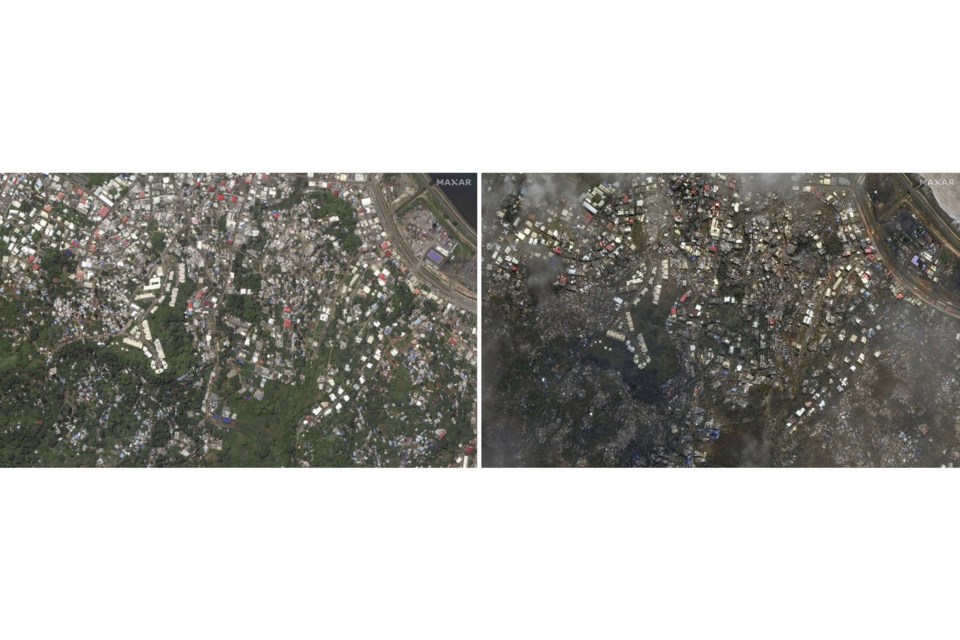The Indian Ocean archipelago of Mayotte is reeling from Cyclone Chido, the most intense storm to hit the French territory in 90 years.
At least 22 people have been killed since Chido made landfall on Saturday, as high winds swept away entire neighborhoods, damaged major infrastructure and uprooted trees.
And while Africa's southeast coast is no stranger to devastating cyclones, climate scientists have warned in recent years that storms in the area are getting more intense and more frequent as a result of human-caused climate change.
When is cyclone season in southeast Africa?
Cyclone season in southeast Africa runs from December to March, when waters in the region are at their warmest. That's because warm water fuels tropical storms so they tend to happen when oceans hit their peak temperatures for the year.
In recent years, devastating storms such as Cyclone Freddy in 2023, Batsirai in 2022 and Idai in 2019 all battered the southeastern coast of Africa — including swathes of Malawi, Mozambique, Zimbabwe and Madagascar — during southern hemisphere summer.
Cyclones are the same as hurricanes, but carry that name in the Indian Ocean and Australia.
How does climate change make cyclones worse?
Human-caused climate change, caused largely by the burning of coal, oil and gas, has heated up the planet: the atmosphere is now 1.3 degrees Celsius (2.3 Fahrenheit) warmer than pre-industrial times.
That matters because one ingredient for a cyclone, or hurricane, is warm water — at least 27 degrees Celsius (80 Fahrenheit), according to the United States' National Oceanic and Atmospheric Association. With rising global temperatures, sea surface temperatures have reached all-time recorded highs.
This warmer water can make the resulting storms more powerful, with stronger winds, heavier rainfall and more destructive storm surges.
In 2022, a group of climate scientists found that cyclones that pummeled southeast Africa that year were made worse by climate change. Because of a lack of weather data gathered in the region, they weren't able to say by how much.
Is Chido a ‘bomb cyclone'?
Storm intensity is measured by central pressure — the lower the pressure, the stronger the storm. A storm is considered a “bomb” when the pressure drops rapidly, meaning the storm grows very quickly. According to NOAA, a bomb cyclone, also known as bombogenesis, occurs when the atmospheric pressure drops at least 24 millibars over a 24-hour period. It typically results in extremely strong winds and heavy precipitation, which can cause coastal flooding. Hazards can also include blizzard conditions.
Bomb cyclones are more commonly associated with cold-weather systems.
Cyclone Chido intensified rapidly, leading some to tag it a bomb cyclone. However, while it intensified rapidly, it would not meet the bomb cyclone criteria due to different formation processes. In a tropical region, cyclones rely primarily on warm ocean waters and atmospheric instability rather than the temperature contrasts (typically between cold and warm air masses) driving bomb cyclones.
Shortage of early warning systems
Much of the African continent lacks the weather data and forecasting that other countries take for granted. Figures from the World Meteorological Organization estimate that the continent has just 37 radar facilities for tracking weather, compared to Europe's 347 and North America's 291.
It means that countries vulnerable to weather extremes are less prepared when deadly storms hit, so they can't evacuate on time. Death tolls of the more devastating cyclones in recent years have gone into the hundreds — and 2019's Idai saw over 1,000 people killed.
In 2022, the U.N. launched a project that aims to put every person in the world in range of early weather-warning systems within five years. The WMO's secretary-general, Celeste Saulo, has made better access to weather forecasts a priority for the agency, calling adapting to climate change an “essential necessity.”
___
The Associated Press’ climate and environmental coverage receives financial support from multiple private foundations. AP is solely responsible for all content. Find AP’s standards for working with philanthropies, a list of supporters and funded coverage areas at AP.org.
Taiwo Adebayo, The Associated Press




